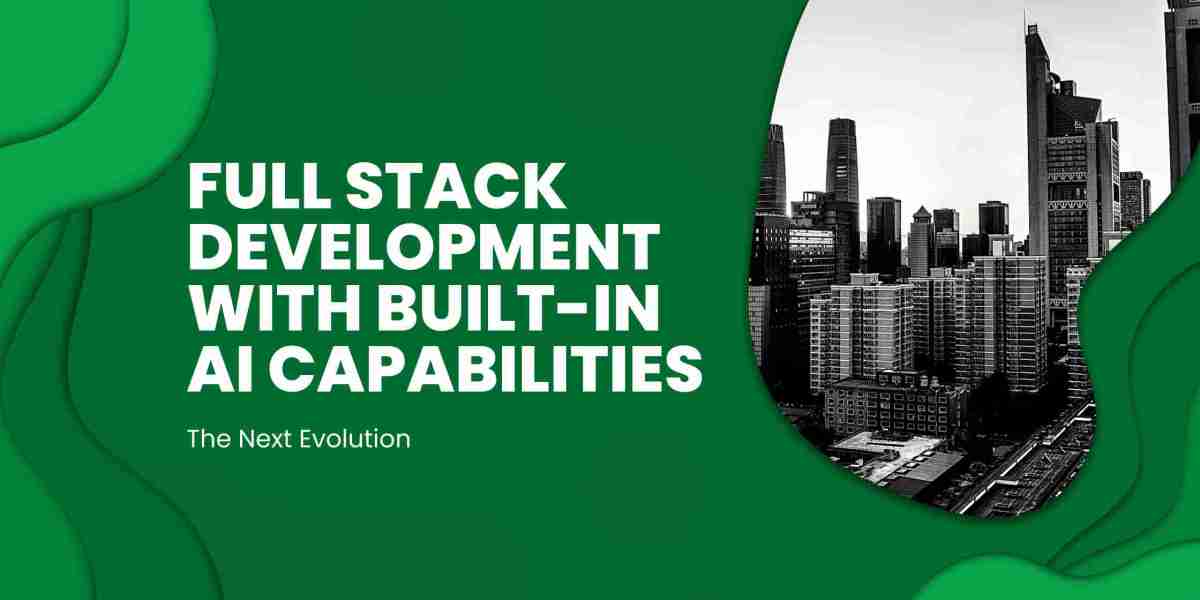Introduction: A New Era in Web Development
Let's cut to the chase—2025 isn't just about sleek UIs and real-time performance. It's about intelligence. We're now stepping into an era where full stack development isn’t just about delivering functionality; it's about creating smart, adaptive systems that learn, predict, and act. Artificial Intelligence is no longer just a backend enhancement or a front-end plugin—it’s being wired into the very architecture of full stack development.
Gone are the days of compartmentalized roles and single-purpose platforms. The future belongs to developers who can architect solutions end-to-end, with AI not as an afterthought but as an intrinsic part of the stack. This is not buzz—it’s reality. And it’s already reshaping how we build for the web.
Why AI is the Logical Next Step for Full Stack
If you think about it, full stack developers are already multitaskers by nature. They juggle APIs, manage databases, optimize UIs, and ensure security. Adding AI to this mix might seem like stacking dynamite on a firecracker. But here’s the twist: AI, when properly integrated, reduces the developer’s burden.
We’re talking about AI-driven data modeling, intelligent API consumption, real-time language translation in the UI, and anomaly detection in databases. Imagine shipping features without writing every algorithm from scratch because the system can suggest optimized logic or flag potentially buggy code before deployment. That’s not magic—it’s machine learning doing its job.
Frontend, Reimagined: Smarter User Interfaces
AI has started to infiltrate the front end in subtle, powerful ways:
Predictive Design: Instead of A/B testing layouts endlessly, developers are using AI to analyze user interactions and suggest optimal UI changes in real-time.
Voice and Gesture Integration: With frameworks like TensorFlow.js and WebGL, gesture and voice-based controls are being embedded directly into web applications.
Real-Time Personalization: Ever landed on a web app and felt like it was built just for you? That’s AI, analyzing behavior patterns and adapting content on the fly.
This isn’t theoretical anymore. Major platforms are already doing this, and open-source libraries are making it accessible to developers across the board.
Backend Reinvented: Intelligence in the Engine Room
On the server side, the transformation is arguably more profound:
Database Optimization: AI models can predict what data will be needed next and pre-fetch it, dramatically improving load times.
Server Load Balancing: Machine learning algorithms are used to anticipate traffic spikes and adjust server capacity dynamically.
Security and Monitoring: Instead of waiting for logs to reveal a breach, AI-powered systems flag unusual patterns in real time, offering proactive security.
Developers are now leveraging AI to create logic that learns from each user interaction. Backend isn't just reactive anymore—it's becoming predictive.
The Toolkits That Make It Possible
You might be wondering: "All this sounds great, but how do I build it?" Here's where modern full stack toolkits come into play:
Node.js + TensorFlow: Combine real-time server execution with AI capabilities.
React + ML5.js: Deliver intelligent UIs with in-browser machine learning.
Python APIs: Flask or FastAPI-based AI endpoints integrate smoothly with JavaScript front ends.
Database + AI: MongoDB and Postgres now offer integrations with AI tools to predict queries or automate indexing.
These stacks are not theoretical; they’re being deployed in production environments at scale. The key is understanding when and where to inject intelligence.
The Workflow Revolution: Coding with AI
There’s no sugarcoating this: coding workflows are evolving rapidly. With tools like GitHub Copilot, Amazon CodeWhisperer, and Tabnine, developers now write code alongside AI collaborators.
Think of these tools as smart pair programmers that never sleep. They catch syntax errors, suggest logic optimizations, and even write unit tests based on the function signature. What used to take hours now happens in minutes. And when these suggestions are context-aware? Game changer.
Of course, human oversight remains crucial. These tools are assistive, not autonomous. But their potential to increase developer productivity is undeniable.
Real-World Applications: What AI-Enhanced Full Stack Looks Like
It’s not just about speeding up workflows. AI-enhanced full stack solutions are unlocking new kinds of applications:
Smart Dashboards: Real-time analytics that adapt based on user roles and data relevance.
Conversational Interfaces: Apps that understand natural language queries and return structured data.
Predictive CRMs: Sales platforms that recommend outreach timing, messaging, and lead scoring based on user behavior.
AI-Powered CMS: Content platforms that suggest SEO tweaks or write article outlines.
All of this is built using standard full stack frameworks—but supercharged with AI capabilities.
Developer Mindset: Skills Needed for the Next Generation
Let’s talk skills. What do developers need to stay relevant?
Basic Machine Learning: Understanding supervised vs. unsupervised learning goes a long way.
Data Literacy: Know how to clean, normalize, and interpret data.
AI Ethics: As builders of intelligent systems, developers must be aware of algorithmic bias, fairness, and transparency.
Toolchain Mastery: Mastery of modern stacks plus fluency in integrating AI APIs is key.
And perhaps most importantly: curiosity. The tools will evolve, but a hunger to explore will always be relevant.
Challenges to Watch For
As promising as this all sounds, it’s not without friction:
Explainability: AI decisions can be opaque. Developers must build interfaces that explain logic to users.
Performance: Embedding AI models can bloat load times. Smart compression and edge AI can help.
Privacy: More data means more responsibility. Ensure compliance with GDPR, CCPA, and similar frameworks.
AI in full stack is powerful, but must be approached with responsibility.
Looking Ahead: The Rise of the Intelligent Stack
The next evolution isn’t about replacing developers with machines. It’s about augmenting their capabilities. Full stack with built-in AI is about context-aware applications, smarter automation, and real-time adaptation.
The intelligent stack is leaner, faster, and more responsive to user needs. And in a world of constant digital noise, relevance is everything.
Conclusion
AI isn’t some future promise—it’s a current necessity. As user expectations evolve, businesses must meet them with applications that think, learn, and evolve in real time. Full stack developers who embrace AI are not just staying relevant; they’re defining what’s next.
Whether you're launching a startup or scaling an enterprise solution, partnering with a full stack development services company in US that understands this convergence is crucial. The game has changed. The intelligent stack is here. The question is: are you building with it?







